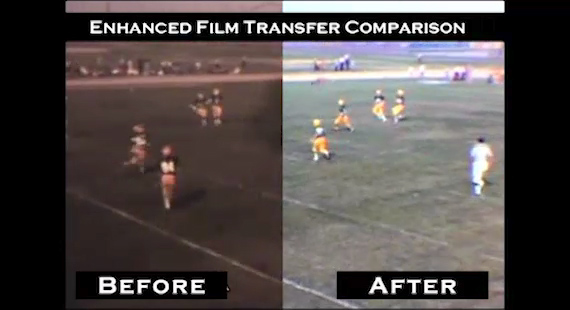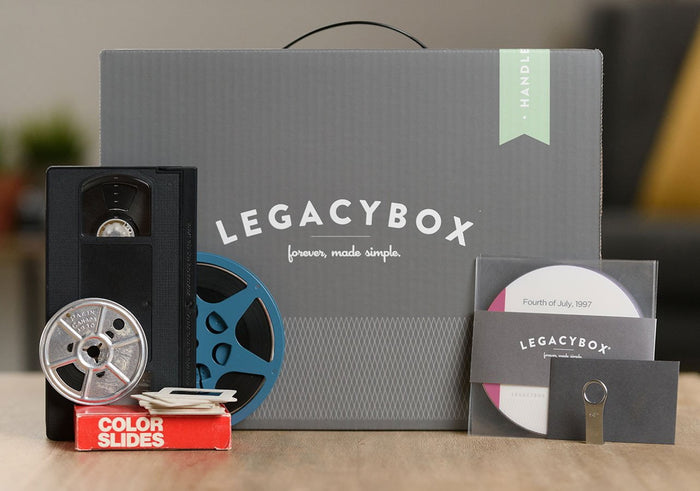

- #Cost to convert slides to digital how to
- #Cost to convert slides to digital manual
- #Cost to convert slides to digital software
- #Cost to convert slides to digital free
If you intend to make quality prints from your scans, then you will need a higher resolution of more like 3,500×2,500 pixels. That means scanning a 35mm negative or slide at 600dpi, while a larger A4 size print needs only 72dpi to fulfil a similar pixel count. If you decide that all you need is a digital image to show on your computer screen or digital projector, its size needs to be no more than around 600×800 pixels.
#Cost to convert slides to digital software
The software will measure the resolution in dots per inch (dpi). When using a scanner, the resolution you set in the software depends on the size of the original and the use to which you aim to put the scanned images.
#Cost to convert slides to digital how to
Credit: John Wade How to scan old photos for the best resolution & colour depth Adobe Lightroom also has a handy option for changing colour temperature of an image after it has been taken.Ĭolour cast induced by copying under incandescent light (left) and corrected by adjusting the camera’s white balance (right).

#Cost to convert slides to digital manual
So go to the manual white balance setting in your camera’s menu and reset it accordingly.Īnother option is to use daylight bulbs, which fit into normal lamp holders, but emit light at 5,000°K. Incandescent light (normal room lighting) is more like 2,700-3,000°K. Daylight and electronic flash are both 5,000°K. Colour temperature is measured in degrees kelvin. A camera’s auto white balance setting should correct the cast automatically, but you can optimise the result by setting the white balance manually. This is because your camera will be calibrated for shooting in normal daylight, whereas artificial light is warmer in tone. If you copy an old photograph using artificial light then the resulting image might have a yellow/orange colour cast. The negatives or slides are fed into the scanner in strips and scans made of each frame in sequence. A scanner with a scanning hood enables a similar process to be used for scanning negatives and transparencies.Ī film scanner is used for negatives and transparencies only, usually 35mm, although some models do allow larger sizes. From this, a suitable crop of the image is selected, along with the required resolution and colour depth, then the final scan is made. With a flatbed scanner, a print is placed on a glass table beneath a hood and, using the dedicated software, a preview scan is made. Scanners make a better method of copying old pictures. To use the same set-up for slides, the desk lamps can be swapped for some form of light box. In this way, colour or black & white prints can be copied. Natural light from a nearby window also works. Lighting can be provided by a desk lamp or, better still, two desk lamps, one on each side of the subject. You’ll need a macro lens to move close enough, and the camera must be kept parallel to the subject. One up from holding your phone over a picture is to suspend your camera over it, using a suitable tripod. Credit: John Wade Is a scanner or camera better for digitising photos? Shot on a table, using an iPhone and lit by a desk lamp, seen reflected in the print (top) and again, under the same conditions, using the PhotoScan app (bottom). Check out your app store to find other suitable apps. The software then combines all the versions to remove reflection and glare, while automatically correcting colour casts and distortion. Moving the phone so that the circle covers each of the spots, in turn, causes the camera to make another four exposures, each from a different angle. The photo you are copying then appears on the phone’s screen with four large spots and a white circle in the centre superimposed over it.

First, a picture is taken in the normal way.
#Cost to convert slides to digital free
PhotoScan by Google Photos is free to download. Using a dedicated scanning app will help to correct both. The image is likely to be distorted because you haven’t held the phone straight and, because old photos are usually glossy, you can end up with unwanted reflections and glare. Simply using your phone’s camera to copy an old photograph rarely gives the best result.

How to scan or photograph old photos and slides How to digitise photos using your phone If that sounds like you and your family, isn’t it time you dragged those photographic archives into the 21st century? By digitising them you’ll give them a new lease of life, turning them into digital images that are easy to improve upon, categorise and locate when you need them. Every family has its history, and every history has its photographs: old colour prints, vintage black & white prints, negatives from both, slides or transparencies.


 0 kommentar(er)
0 kommentar(er)
